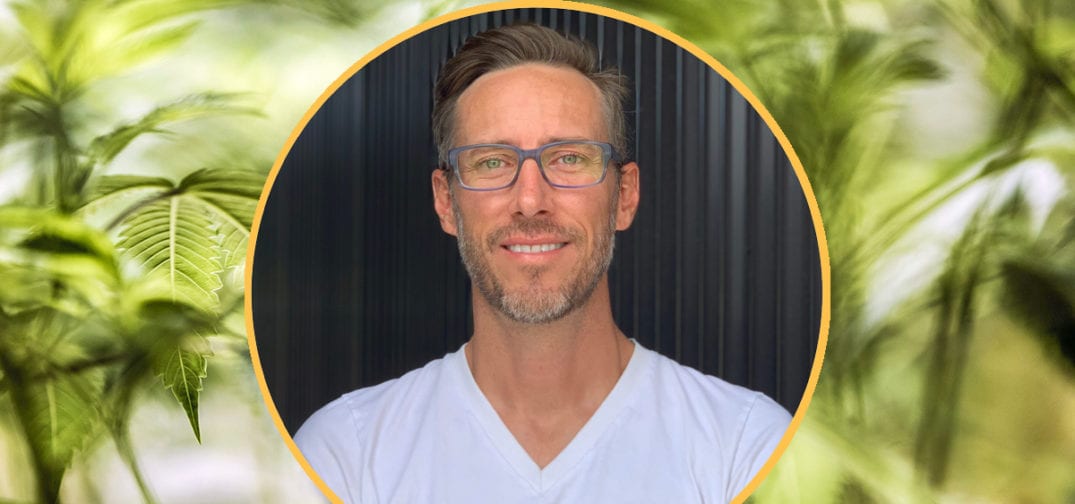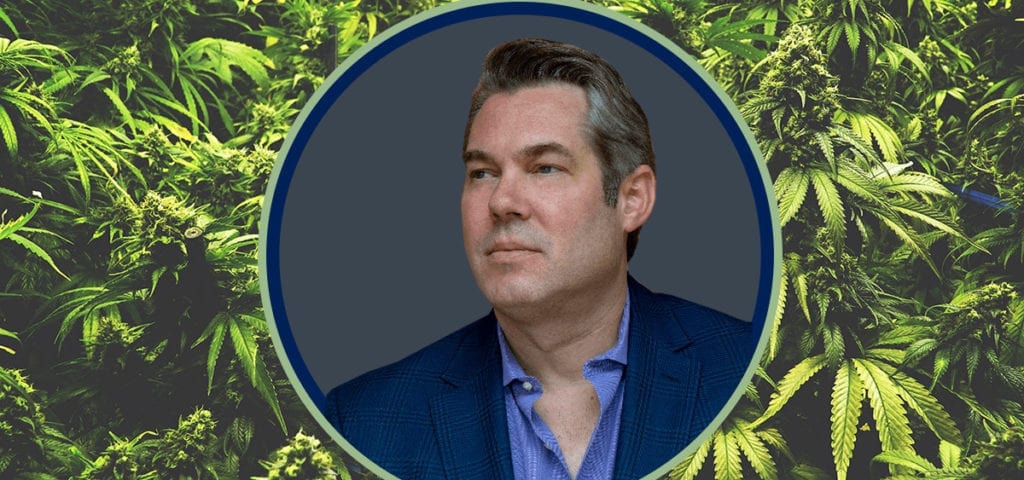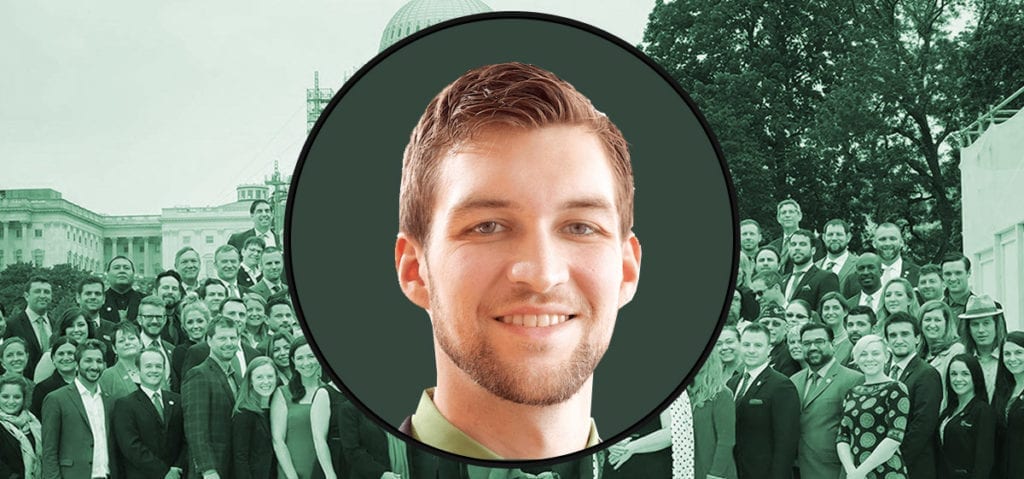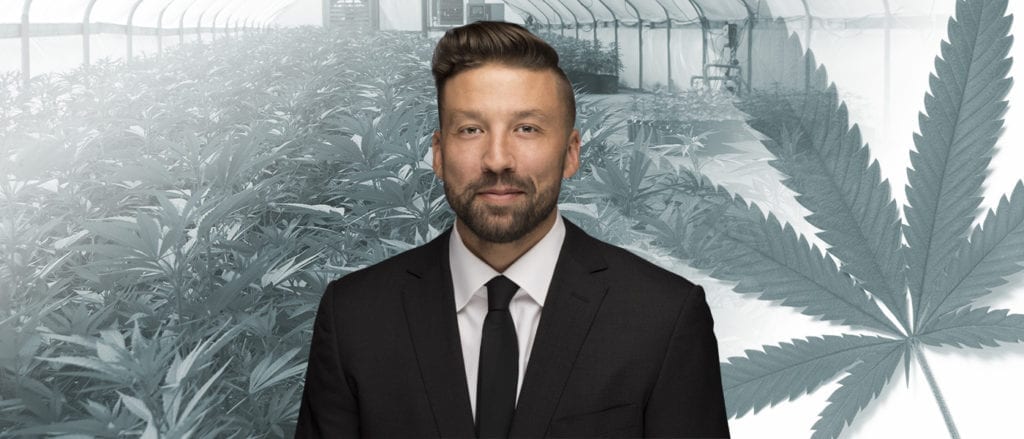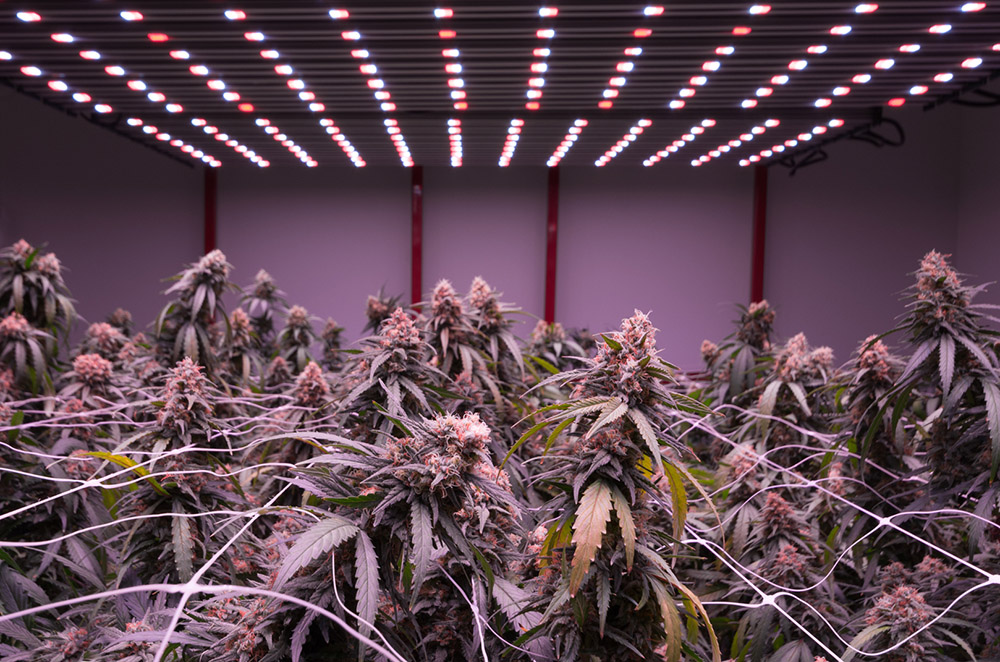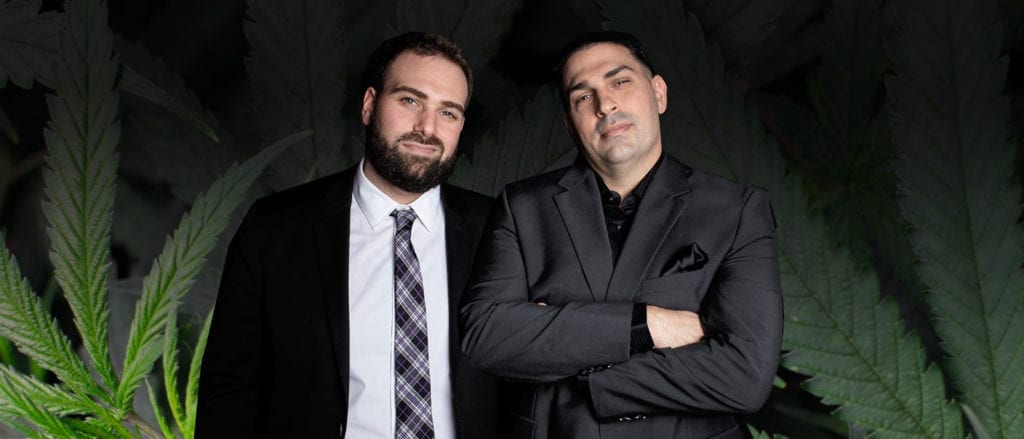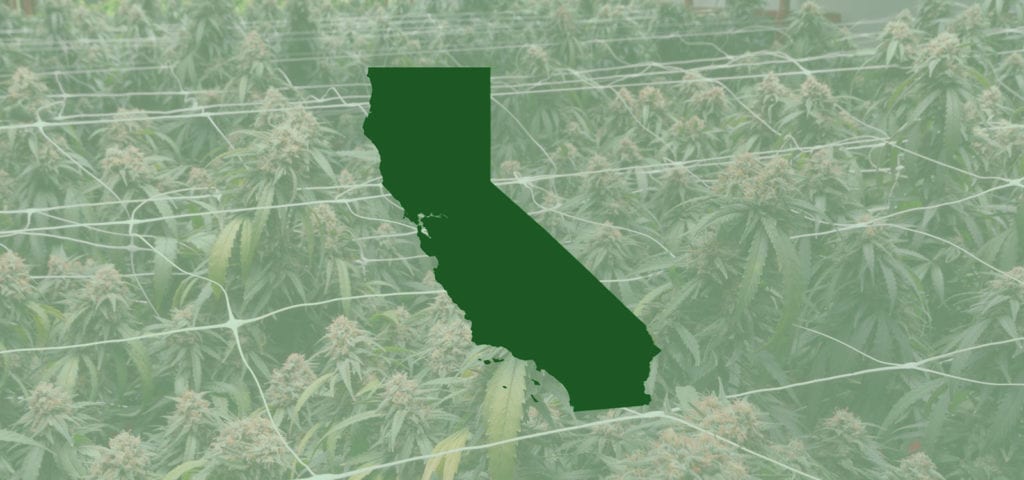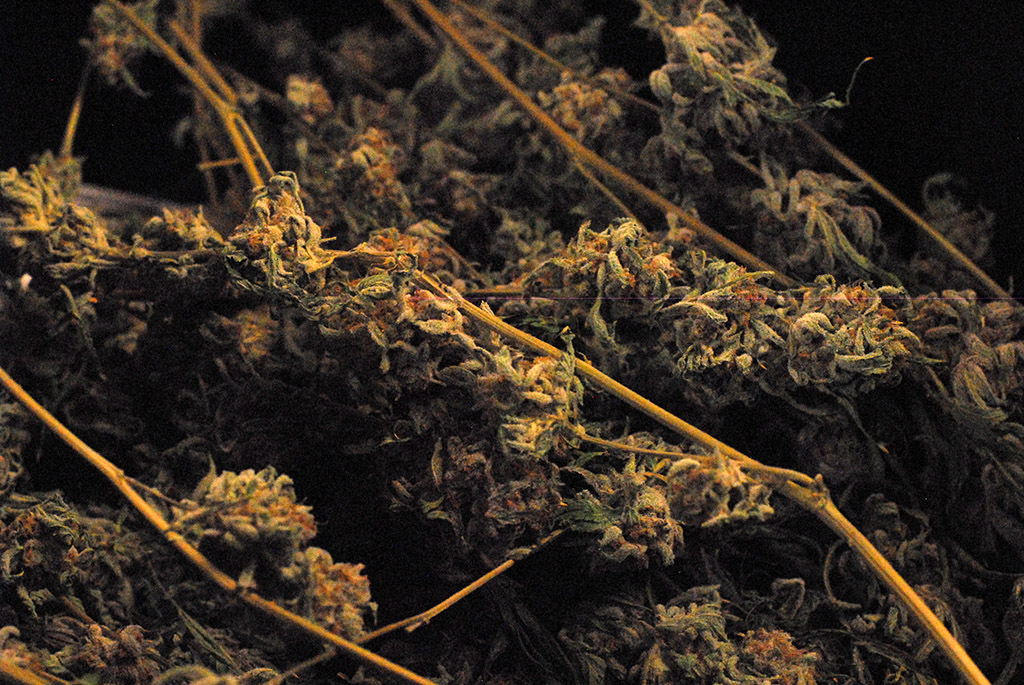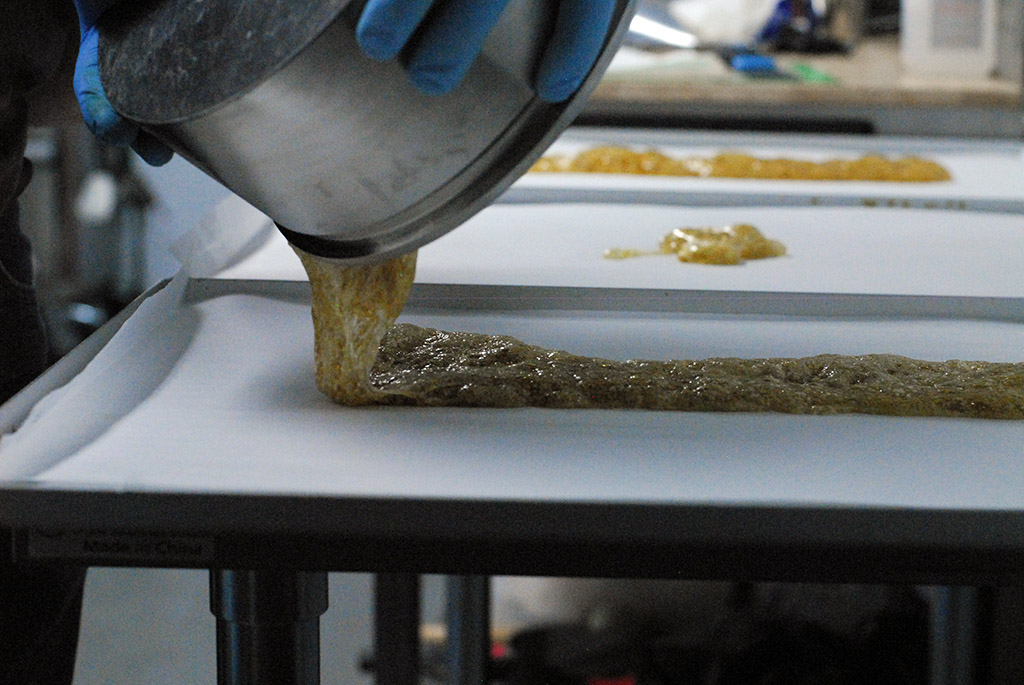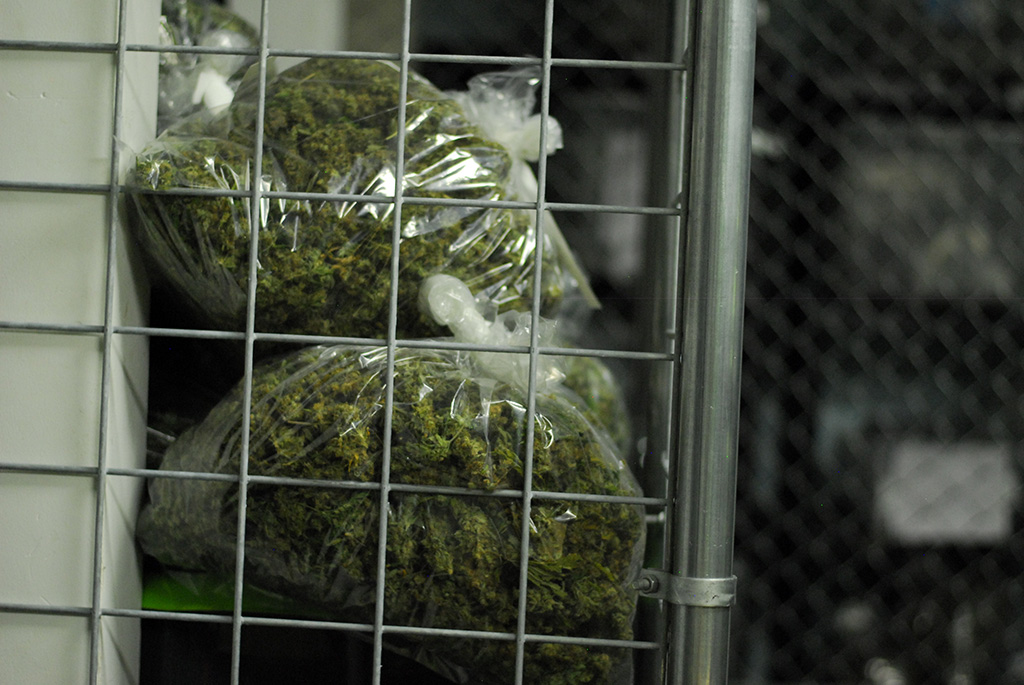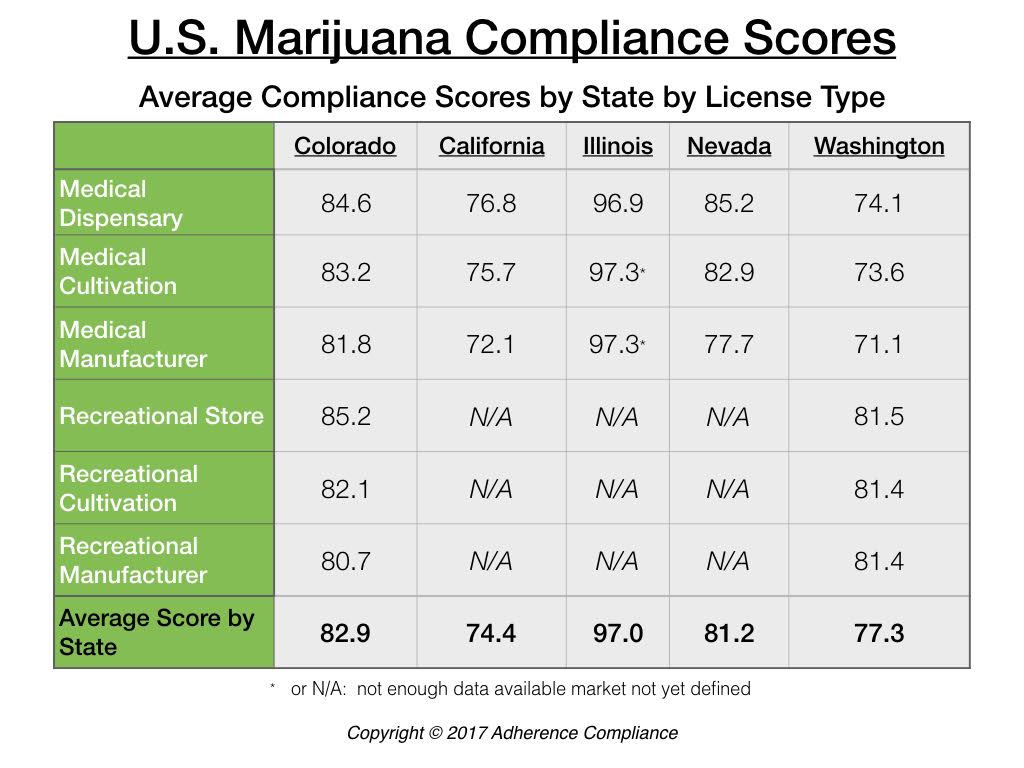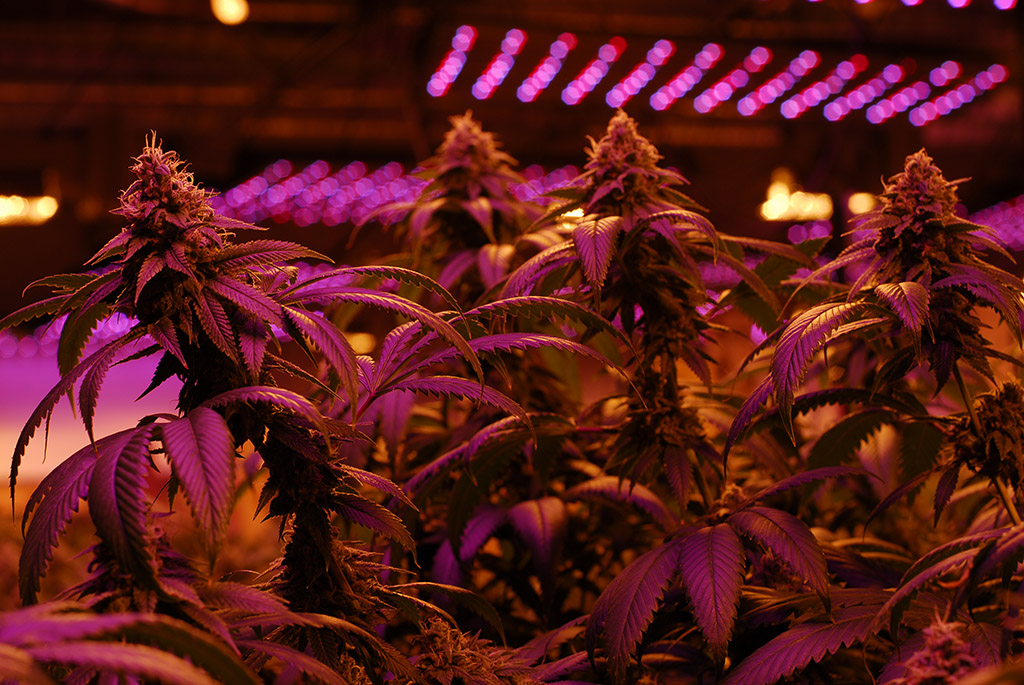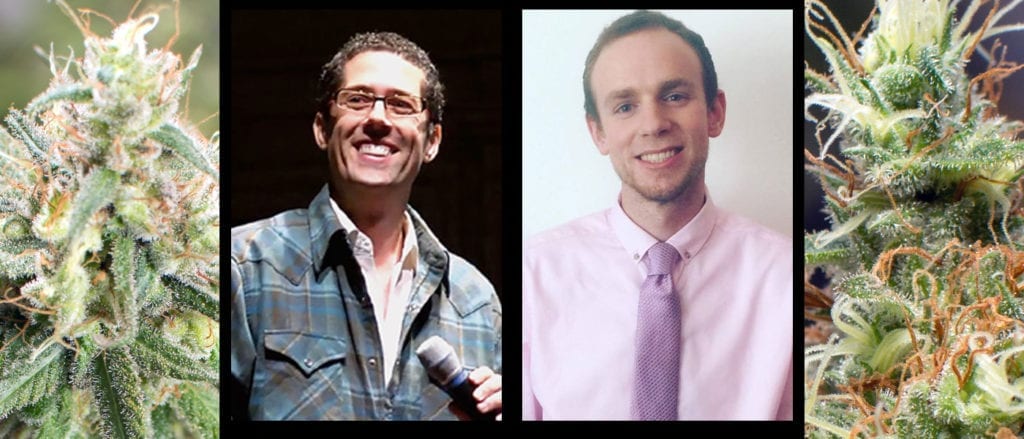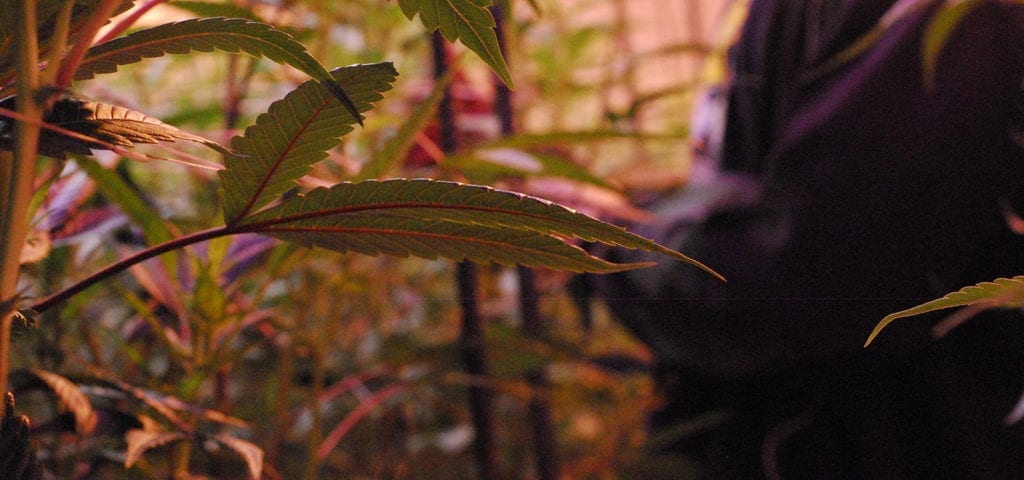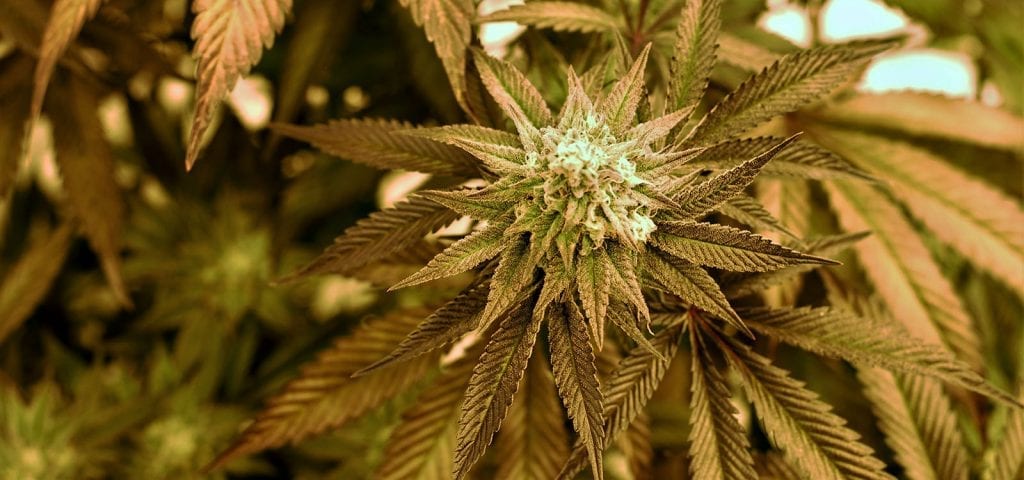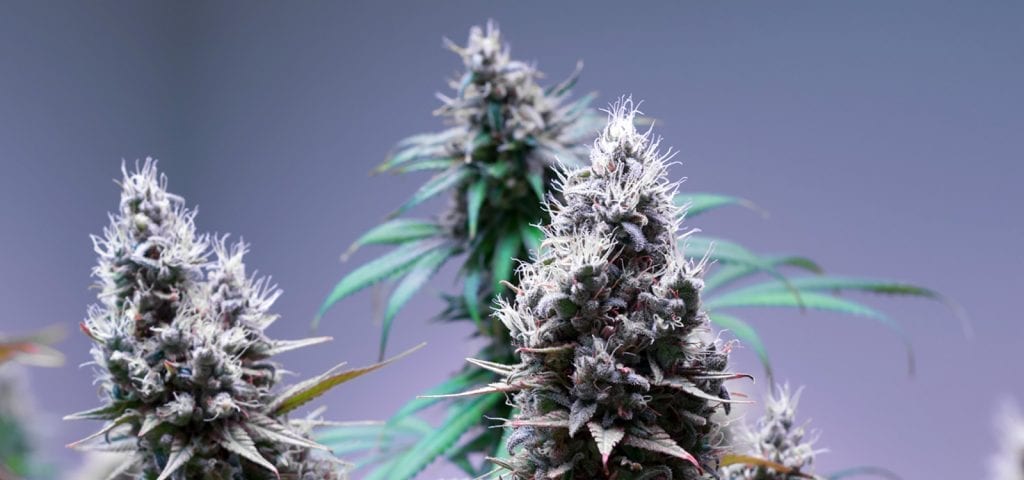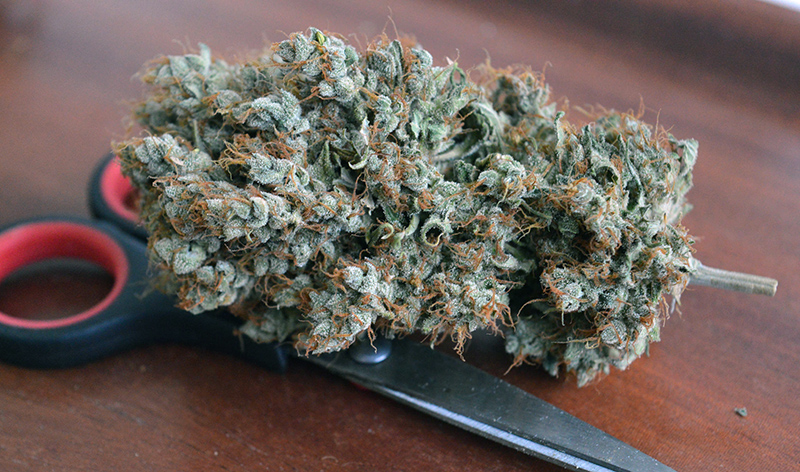Ben Cassiday is the co-founder of True Terpenes, a company that extracts and distills naturally occurring terpenes harvested from a variety of organically grown plants.
In this episode of the Shaping Fire podcast hosted by Shango Los, Ben and Shango discuss the many commercial applications of raw terpenes, how terpene extracts are affecting the cannabis industry on a wide scale, and where commercial-grade terpenes usually come from. The two also discuss specific plants that share similar terpene profiles with cannabis, as well as the personal, consumer-level use of terpenes — including their role in aromatherapy and how beginners to the subject can experience this unique and uplifting boost to one’s quality of life — and much, much more!
Listen to the interview below, or continue scrolling down to read along with a full transcript of the episode.
Listen to the podcast:
Read the transcript:
Shango Los: Cannabis smells really good. Most of us buy cannabis based on its smell. We unscrew the jar, stick our nose in there and take a mighty whiff. It’s your body that tells you if you want that strain or not.
I’m Shango Los, founder of the Ganjapreneur podcast. I’m now host of the Shaping Fire podcast, and my friends at Ganjapreneur.com invited me to share with you this special episode of Shaping Fire. I hope you enjoy it. If you do, I invite you to find more episodes at shapingfire.com.
During Shaping Fire episode 11, we spent a lot of time talking about cannabis terpenes with world-famous neurologist and cannabis researcher, Dr. Ethan Russo. He explained how THC, CBD and the other cannabinoids work in cooperation with the terpenes in the plant in what’s called the Entourage Effect. The terpenes are the plant’s aromatics. They are why cannabis smells so good, whether it’s pine, chocolate, citrus or skunk or any of the other aromas of cannabis. One of the essential aspects of healing with cannabis simply is its smell.
If you enjoy hearing frank discussions that dive deep into cannabis health, business and technique, I encourage you to subscribe to our newsletter. Every week you’ll receive a new podcast episode delivered right to your inbox along with commentary on a couple of the most important news items from the week. Social media sites are becoming very unreliable in showing folks every post they want to see, so sign up for the Shaping Fire newsletter to make sure you don’t miss an episode.
My guest today is Ben Cassiday, cofounder of True Terpenes. We’re going to talk to Ben about cannabis aromatics and aroma therapy, how terpenes are isolated for sale and how you can use terpenes even without cannabis for everyday healing and quality of life. Welcome to the show, Ben.
Ben Cassiday: Hey, Thanks for having me on. It’s a real honor.
Shango Los: Let’s get right to it and talk about where terpenes come from. I mean, we know where they come from in nature, but how are isolated terpenes extracted or manufactured?
Ben Cassiday: One of my favorite things about that question, and I think it’s probably … Once somebody gets over the idea or starts to understand what is a terpene and then they’re immediately like, “Well, how do you get them?” It’s one of the ones that I get asked the most.
What I like to initially say to people, “You’re actually, probably a lot more familiar with isolated terpenes than you think.” Let’s just start with saying that terpenes are separated from plant material typically through two different methods, one of them is vacuumed distillation and one of them is steamed distillation. Sometimes you can use steam distillation in a vacuum distillation setup.
Just to give a rough preliminary description of vacuum distillation, it’s where we’re removing the atmosphere. A lot of people are starting to see these fancy glassware setups for short path distillation and other kind of high-level extractions within the cannabis industry. Just know that the actual purpose for these distillation setups has been more tailored towards the essential oil industries for a long time. So, we’re using the same technology that’s been around for a while to isolate terpenes with vacuum, which means like I said, we remove the atmosphere. When you remove the atmosphere, you’re basically making it easier for things to boil off. They don’t have to fight the vapor pressure for them to become active in an environment. Vacuum distillation is great because it allows you to use a very little amount of energy and a little amount of heat, which means the molecule doesn’t get distorted or destroyed. Steamed distillation is a little bit more widely used, but it allows some of the molecules, some of the terpenes to change in state. They’re not necessarily just like they were in the plant.
So, there’s positives … Steamed distillation allows for a larger batch sizes and a little bit less sophistication when it comes to equipment. Vacuum distillation allows for very, very precise and gentle extraction practices. Really, it’s a process of taking raw plant material, turning it into an essential oil and then taking that essential oil and slowly boiling all of the individual components out of it.
Shango Los: One thing I’m not hearing any of that is any chemicals, so it sounds like the two processes you’ve described so far are actually pretty clean.
Ben Cassiday: That is correct. There’s different industrial applications or distillation procedures that somebody might take plant material and they might use a solvent. Under vacuum distillation or steam distillation, but in this case when we’re working with food grade and sometimes above that grade, chemicals that people are going to be ingesting or using in fragrances and other kind of related fields, it’s always been a really important thing in our line of work, personally with our company, to make sure that there hasn’t been any solvents used in the process.
Shango Los: Right on. That’s a good example. I want to talk briefly about the bad example. A couple of weeks ago we had Dr. Ethan Russo on the show talking about terpenes and cannabinoids in general, and he surprised me. He said that some terpenes are derived by … they’re coming from petroleum refinement and it’s a byproduct of that, tell me about that. I don’t really know what they would do so give me a little background.
Ben Cassiday: Actually after listening to that episode when it went live, which I just have to say is maybe one of my favorite podcasts of all time not just because I’m on your show at this moment, but really it just went in depth. I loved it. It inspired me to look a little bit more into because I had a few ideas but I wasn’t really sure.
A lot of people are starting to hear at this point, especially when I go out and speak to people, people have heard cannabis might have 200 terpenes and that there’s 30,000 or 40,000 in nature, and so it’s a very diverse class of chemicals. To say that something is a terpene doesn’t necessarily … It’s not some a small class of chemicals. You’re not going to necessarily find the same terpenes in cannabis that people are going to be getting from these industrial sources of petroleum.
When I looked into it, what I was able to find is people are distilling in an industry … not really people, but industry has been distilling petroleum for things like mineral spirits, kerosene, naphtha and they … As far as being a hydrocarbon molecule, they’re very similar. So, I think for my best guess, without having reached out to Dr. Russo to confirm based on what he was saying, I think that we can assume that any carbon-based organic substance that is made of isoprene, which is the building block terpenes, can be considered a terpene.
I think it’s just such a wide diverse class of chemicals that, yes, in fact, many of them can be derived from all sorts organic materials and a lot of times we don’t really think of mineral spirits or kerosene, gasoline. It seems so chemical in nature, it doesn’t really seem like it’s an organic product, but it really is. It’s derived from crude oil in and through distillation process, cleaned up. That is my best guess at this point as to … without being able to speak with him directly.
Shango Los: Right on. That makes sense. So, it’s not that we’re getting d-limonene from citrus fruit and also from petroleum. It’s a specific set of uncommon terpenes that we would get from petroleum production.
Ben Cassiday: I believe … and maybe, I would even say those might be some of the most prevalent terpenes on the planet just because of how much crude oil is actually distilled and then the number of uses for kerosene and naphtha and other kind solvents of that nature. But, yeah, as far as the ones that we’re all, and at least in this community, quite interested in, from my knowledge so far I don’t think you really need to be concerned that it came out of gasoline or crude oil producing gasoline for your like your alpha-pinene, or your myrcene, or linalool.
Shango Los: Right on. Cool. That makes a good point. So, even though they are truly trashy terpenes, they’re not really the one that we work with in our sphere, and so let’s focus on ours. Let’s talk about the grades of terpenes because one thing I have certainly read people fighting about, quality of terpenes on Facebook and different forums, and we all know how ugly and inaccurate a lot of those debates are, so let’s go through a couple of different standards that can be used to grade a terpene. I know a lot of folks who are selling terpenes, they really push that they are organic and food grade, what does that mean to me as a purchaser, as a consumer of terpenes?
Ben Cassiday: Good question. As far as food grade goes that really just means that the Food and Drug Administration has placed this substance on the approved food additives list.
Our company really focuses on only selling terpenes that are found within cannabis. It just so happens that we haven’t ran into a terpene that was found in cannabis that also was not found on the Food and Drug Administration’s list of approved sources. In that case, all of the terpenes that we’re working with are food grade, GRAS, a lot … Some people might not know GRAS stands are Generally Recognized As Safe that means for human consumption. It doesn’t mean that it’s free range and you can just bathe in this stuff. It just means that under the right circumstances with proper product formulation that this can be used in a cosmetic product, or a nutraceutical product, or a food product.
Shango Los: Right on. That makes sense. Then, the organic part, that probably refers to whatever your source plant material was raised without pesticides?
Ben Cassiday: It definitely does if it’s got a third-party certification on it for being organic. But I actually have the statement pulled up here, it’s an FDA statement and, basically terpenes are by definition an organic molecule. They contain carbon. They don’t exist outside of being organic. So, the FDA actually allows all terpenes that are not synthetically derived to be listed as an organic substance because in isolation they, again, it’s a carbon containing molecule, it is organic-
Shango Los: I see. That’s like those of us who are nerds for organic food. We would call a little-o organic meaning … Yeah, it’s about it being a natural source not necessarily whether or not it uses pesticides.
Ben Cassiday: Right. Which brings me to the point that I usually bring around with that, which is what’s most important, I think, with terpenes is looking at what else is in the solution? It’s very difficult, almost impossible to get a 100% terpene solution or even a 99.9% in most of them. It’s just very difficult to do. So, you need to really look at what is in that other percentage and that really becomes what’s important.
A lot of the terpenes are very similar by chemical nature. They have almost the exact molecular weight of one another, under the right circumstances within the plant and outside of the plant, they can actually turn from one to another, so it’s very easy for limonene, alpha-pinene, myrcene, for instance, to phase shift between each other given their environment. You might have a bottle of 99.9% limonene, it doesn’t mean that it’s contaminated with something. It really might mean that that final fraction in there was some myrcene and alpha-pinene that just could not be separated. That’s what I like to always bring it back around is to is as far as these terpenes go, a terpene is organic but the package that it comes in and the other substances in the solution is what we really need to look at.
Shango Los: Right on. That make sense. In this industry, do we really care whether or not the original plant was grown GMO or not? Is that something that we want to be aware of when we’re making purchases?
Ben Cassiday: I think you have such a diverse crowd of people that are consuming, I think it’s important to make sure that people are aware beforehand that it came from … whatever they’re consuming came from non-GMO.
Myself, personally, I come from the camp that I think that we should investigate GMO. I don’t think that it’s something to be shunned, but I also think that everyone should be notified of what they’re consuming and people should have the ability to opt out if they’re not interested. I think that if that applies to food then I think it applies to cannabis as well.
Shango Los: Right on. That’s a good point. That brings us up to what is probably the most discussed and possibly controversial part of what is and is not a terpene because terpenes got really hot and interesting in being able to extract cannabis profiles.
The first time I saw this being done was at the Emerald Cup in … Let’s see, that would have been 2015, Emerald Cup. Tony Verzura from a United Cannabis had all these people around him and he was taking what they know … folks were bringing him up, what was otherwise, mediocre slabs of shatter, and he was taking cannabis profiled terpenes and painting the dab oil and then the folks would go and dab and they’re like, “Oh, this is the best Gorilla Glue I’ve ever had!” They were adding terpenes after the fact, and people were going bananas. It was quite impressive to see everyone’s excitement about taking mediocre cannabis product and supercharging it with a terpene profile.
After I got into that I realized how controversial it was about whether or not different cannabis companies were either, A, taking actual cannabis flowers and distilling from that to get the actual terpenes that was in a batch of flower or, B, doing research to find out what terpenes were in, say for example gorilla glue, and then hand blending food grade terpenes to emulate what the terpene profile would have been if you would have taken them directly out of the flower. Man, people will fight all day long on social media about that. Why don’t you break it down for us, the differences between those two approaches?
Ben Cassiday: Absolutely. I think I first would just start by saying my same opinion about the GMO substance applies to this as well. I think that isolated terpenes, we don’t have the entire catalog of 200 available to us at this point, and there’s a couple of different reasons for that. Some of them are incredibly difficult to have in isolation, and that’s because they might have a boiling point around room temperature of 80° or so, which is why when you’re in a hot grow room it really just smells something special and you’re never really going to be able to re-create that or fully capture it with the final product. Live resins and other extractions are doing a pretty good job of capturing as much terpene as possible, but at the end of the day, there are some of these compounds that are not easily isolated. What that leads to is the terpenes that we actually have at our disposal, so add back are primarily the heaviest, most stable molecules, the mono and sesqui-terpenes.
If you were imagining you … let’s say, you started with a gorilla glue forge, just to follow your example, and you took that into the testing lab that we prefer to use this time, SC labs, and they gave you the terpene analysis back, which at this point they count for 34 of them, you would have … that’s going to tell you the natural ratio that the terpenes, that they are able to test for, are found in that plant.
Then, there’s one other special number on that page, and it’s the total content by volume. You’re going to see all these different ratios and it’s 34 of them, you’ll see alpha-pinene at 3% and beta-pinene at 2%, so it’s going to be listed out in either percentages or by milligrams per gram. Then, at the bottom is going to say, “But the total content of that entire gram was 4%,” or 7%, or something along those lines. It’s going to vary depending on if it was a flower sample and if it was grown indoor or outdoor or if it was a concentrate and how it was extracted.
So, what’s really important to look at it is, if you’re looking to emulate cannabis naturally you’re going to want to only add back those mono and sesqui-terpenes, let’s just keep it easy, say there’s 34 terpenes, you’re going to want to look at what does the plant naturally produce at its best case scenario, fresh off the plant before any sort of degradation has happened or mishandling, and then try to emulate that. Not just slopping it on and assuming that more is going to be better but really, precisely maybe even take … measuring the … again, we’ll follow your example, so we’ll say a slab of concentrate, running a terpene test on that and seeing where it is right now, currently as a blank canvas without any additives to it. Then, let’s say you get a A+ top shelf concentrate that you really admire from another source, somebody else did some live resin and you have some standard BHO, you could look at the terpene content of that live resin and compare it to the terpene content of your BHO and you could spike all of the individual mono and sesqui-terpenes to make it more like the A+ medicine.
I think that’s best case scenario, what you saw Tony doing, was because he because the product he was working with is supposedly cannabis derived terpenes, it’s taking those natural ratios in the proper dilution and adding it back. Nature already did all the heavy lifting with that. I really am a fan of those sorts of products. I think that the only reason that I’m in the business that I am right now is because they’re very cost prohibitive. They’re about 15 to 20 times more by the time you get to the consumer level of somebody buying a milliliter next to a milliliter, cannabis derived versus isolated plant derived terpenes. There are also little bit less shelf-stable and a little bit more inconsistent as well. Somebody has to continue to grow that crop of cannabis under the same conditions to produce the same flower to then be distilled under the same … It’s a lot of new tech coming into play, and people haven’t been isolating terpenes for a long time and it’s a little bit of a … not as much available as far as source material. You can only grow so many plants, most places in this world and then you have to decide what to you’re going to do with those. I’m just not convinced personally that distilling cannabis derived terpenes out of that is maybe necessarily the best use for really good cannabis.
I think, as … to get back to comparing apples to apples, I think limonene from an orange and limonene from cannabis, they’re chemically identical, and this is true of all terpenes. The other ones that I think people might be familiar with are linalool from lavender and myrcene from hops. But what I think ultimately it comes down to is the importance of purity in relation to contaminants. If you have five milliliters of limonene, you want that to be as close to as possible to pure limonene. If you’re dealing with a distillation like what we work in, achieving those super high percentage purities is one thing, we shoot to have everything above 96%, but then the other side of that coin is making sure that the other 4% that’s remaining is not pesticides, solvents or other degraded organic material.
One thing that a lot of people might not be familiar to hearing is that if chemicals like acetone or a couple of other known solvents are actually … can be produced by the degradation of plant material of other natural organic materials as UV and time play their course.
I think that was a little bit of a round-about so I apologize, but really I think as far as source comes … and maybe you could actually return to the question.
Shango Los: Yeah, right on. Bringing it back to the cannabis strain profiles part, and you answered my question really well, explaining the difference between the cannabis derived and the plant food derived. But what it occurred to me is that when you described how cannabis-derived is going to be 15% to 20% more … not 20, 15 to 20 times more expensive, what made me think of … I’ve seen a handful of terpene companies, and I know the prices they charge, a lot of these folks that write their copy to suggest that their profiles are extracted from cannabis, they just can’t be doing it for the price that they’re selling it at it.
It sounds to me like some companies are probably being a little creative with their copywriting just because it’s so much cooler. People generally think it’s cooler to take your terpenes directly from the flower, but that’s so cost prohibitive that maybe they’re writing their copy to kind of suggest that in an abstract way. But when push comes to shove, they are actually pulling terpenes from food plants and then just doing their absolute best to make a blend that matches the terpene profile that they got out of the test.
Ben Cassiday: Yeah. I guess to start off to say, we really made it our … we took a position early on because everything that you just said was the thoughts that I’ve had and that our company has had, but we took a position early on, did not try to police the industry just because there’s so much to focus on within the organization that what people are doing on the outside, we’re … I just don’t have a crystal ball.
What I will say is that I think it’s not it … I think part of what you said with people, the copy, I think people are getting pretty creative with their copy. At least in my experience, I’ve bought from several of the companies that suggests that it’s cannabis derived, and what it really appears to me is something along the lines of a cold trapped cannabis terpene from a vacuum oven or maybe even a distilled batch combined with isolated terpenes. This isn’t a new practice by any means. The essential oil and perfume industry since, I think probably its inception or very shortly thereafter, has been plagued with companies that will take lesser oils and cut more expensive oils to make them stretch further. So, yeah, I mean, it’s a practice that in one way or another is happening. We just, like I said, we never went really wanted to police the industry and we’ve never been embarrassed that we sell plant derived terpenes so we’ve just always made it blatantly obvious that these are from other sources and try to give people the tools to decide if working with us is within their guiding principles for what their business is trying to achieve.
Shango Los: Right on. That makes a lot of sense, no reason for you to police the industry. One of the things about having both a freed open market and also the internet, if somebody is selling schlock, the word is going get around and they’re going to have to deal with that. Better to focus on your own startup company and your own science and and go from that.
We’re kind of late for our first break so we’re going to get that. But anybody who’s been listening to the first set here, they’re all like, “Man, they’re leaning on the manufacturing and science part a little heavy.” Do not fear, set two is going to be all about how to use terpenes in everyday life. So, please stay for that. You are listening to Shaping Fire. I’m Shango Los, and my guest today is Ben Cassiday, cofounder of True Terpenes.
For anyone who is paying attention to cannabis medicine, it has become incredibly apparent that full extract cannabis oil, known to some as Rick Simpson oil, is the cornerstone of healing humans with medical marijuana. If you own a medical dispensary or a retail store, you know that your customers are asking for it every single day and if you have been working with patients and seeking out quality full extract oil in the Pacific Northwest, you know the provider Deep Green. Cat Jeter and her team at Deep Green have been making full extract cannabis oil and setting the standards for quality and exact dosing for years in Washington state. The Deep Green brand is known by patients and cannabis media as a premium quality provider for sick children, cancer patients and others in need.
At a time when there are no national standards for cannabis oil, ensuring a product as whole plant, quality assured and lab tested is often a matter of knowing your source is reputable. Trusting a quality brand is essential when choosing a cannabis medicine that is going to be used concentrated and in volume by any patient, and especially those with weakened immune systems. Deep Green is looking for national brand partners to expand the availability of their legacy top-shelf cannabis oil to emerging medical and licensed states. Partners benefit from the Deep Green brand recognition and credibility as well as ongoing customer and marketing support. Not only that but Deep Green knows how to employ the 280E tax rule so you can deduct it all from your taxes.
Working with Deep Green can provide the trust and authenticity too often pushed aside in favor of lifestyle products. Your customers can assure themselves that regardless of the state in which it is made, brand licensees adhere to the same strict standards that patients everywhere have come to expect from Deep Green. Deep Green licensing includes startup and capital planning as well as operational and manufacturing instruction, as you’d expect.
For more information on how your company, co-op, or medical dispensary can benefit from partnering with Deep Green to provide full extract cannabis oil to patients, go to shapingfire.com/deepgreen to connect with Cat Jeter and her team. That’s shapingfire.com/deepgreen.
Welcome back. You are listening to Shaping Fire. I’m your host, Shango Los. Our guest this week is Ben Cassiday, co-founder of True Terpenes.
In the first set we were talking all about how isolated terpenes are extracted or manufactured and the differences between terpenes that come from raw cannabis versus come from plant sources. Well, that’s really interesting for people who are nerdy about the science part but I’m sure there’s people who are listening who are like, “All right, I got it. I know what terpenes are. Now, how do I use them in my everyday life?” I’m going to start with the example that is actually how I met you, Ben, and what really impacted me and how I knew I wanted to have you on the show.
This past year, in December, I was down at Emerald Cup and Ben was part of a group of cannabis owners, NI, and we all rented this wine villa where we could all stay together. It was really great, right? Because all these cannabis business owners were all learning from each other.
At one point, Ben went around the room and he gave everybody just a little bit of a beta-caryophyllene in their hands and encouraged them to cup their hands and inhaled deeply, and I had never done that before. Beta-caryophyllene just smelled so good and it made me feel so calm and it made me realize that even though up to this point, all of my care about terpenes was really what was in the flower. I never really thought about using the terpenes independently from cannabis for quality of life.
Since that time, I’ve gotten an ultrasonic terpene diffuser and you showed me how to dab it, so let’s go through some of those ways that people can use terpenes at home without actually burning or vaping some marijuana.
Ben Cassiday: Okay. Yeah, definitely. I think the, just like you were saying, the first, and I think maybe easiest, is probably … is through the process of what you called hand huffing.
I want to first start by saying what I actually had everybody try at the Emerald Cup was … it was beta-caryophyllene but I had mixed it one-to-one with just some extra virgin olive oil. I think that that’s just an important note to start off with for anybody at home that might want to try this just because we want to make sure, just like any other essential oil that we’re going to put it with a carrier oil, unless you’re an aromatherapist or an expert that’s been using this for a really long time, I think you can always assume that you should probably cut them with something because they are very just powerful chemicals. Each and every one of them. Many of them active solvents in high purity. I just want to start with that and say make sure that you’re being safe and practicing good aromatherapy practices.
With handhuffing, the reason I really wanted everybody to apply the beta-caryophyllene to their hands was twofold. It is one of the most relaxing and calming … Our particular mix is derived from a combination of black pepper and clove, and it very much resembles both of those plants. It’s spicy and earthy. When you come into contact with it, it’s immediately everything that I think that you’ve just described, it’s relaxing and it’s really, in my opinion … People have heard chew on black peppercorns if you’re too high or something of those nature, and I think that beta-caryophyllene is so interesting for that purpose because it’s not overly stimulating, it’s not in your face too strong and it’s one of the more benign terpenes. By that, I mean that you can be around a lot of it before you start to get to an intoxicated level, whereas there’s some terpenes like, let’s say, geranial, which is the main terpene in roses and geraniums, which really can start to have an effect on you very quickly. I like to start with beta-caryophyllene, it helps people get their hands terpy and then we move from there.
The second reason why it’s so … it’s very … it’s a good learning tool and nobody’s going to get hurt from it in most cases. The other reason being is it’s a topical anesthetic and it works very quickly. That’s the other reason why I really like to introduce it to people is because everybody at one time or another in their life, or most people, have had the opportunity to have a sore muscle or something along the lines where they rubbed a cream on and were expecting some sort of relief. There’s obviously varying degrees of success with those, some of those like a icy-hot pack and like Vick’s vapor rub for instance, actually are containing terpenes. So, with the handhuffing I just want to always encourage people to make sure you’re using an olive oil or a coconut oil, sweet almond oil. You can get on Google and look around for an aromatherapy carrier scent and you’ll find a list of 30. But the main ones that I really like to do that with are the primary ones from cannabis, and I think that it’s just because I’m so familiar with them and I know what to expect when working with them.
Should we go down that road or would you like to go other methods?
Shango Los: Yeah, let’s go into other methods. You recommended to me an ultrasonic diffuser, which I picked up and I love, why don’t you go ahead and explain that and why it’s making my room smell so good right now?
Ben Cassiday: Yeah. That’s actually probably the way that I consume the most terpenes, and everybody within our company, is the ultrasonic diffuser, which basically is just using a small amount of water and a vibrating sound wave to make the particles of the essential oil and water into nano particles so that they can be puffed up into the air and naturally breathed in lower concentration. So, whereas we’re getting a direct inhalation of the extract when it’s in our hands, we’re filling the room ambient with terpenes when we use an ultrasonic diffuser.
That’s, like I said, I feel like it is a little bit more natural because we’re getting a diluted … it’s combined with oxygen, you’re breathing it over a period of time. I, personally, start my day, every single day in my office, I close the door and I kick it on and I put some limonene and citral in it, both citrus derived terpenes, and that really just seems to be a … like Ethan had alluded to in his episode, very sunny and bright and alerted. That’s the way that I’ll start my day if I’m sick or thinking that I’m getting sick, I’ll use alpha-pinene. Alpha-pinene acts a bronchodilator. Anybody that’s had interaction with it, I think, will testify that it opens the lungs and makes it just much easier to breathe. That’s what you had mentioned earlier, Shango. It’s low impact, it’s certainly, I think, therapeutically active but it’s not going to give you any sort of chance to you inhale something that’s too potent or too strong and it’s not going to scent your hands or anything like that. It’s just very easy to set in the corner of the room and let it run.
One of my favorite reactions to take note of is the before and after somebody that’s never used one before. A lot of people have differing opinions on how aromatherapy works and what it is, but it I just like to let it speak for itself. So, to have somebody sit down in a room and start a conversation and let the diffuser run for a few minutes and then to watch the face change as they realize that they feel different than before, four or five minutes before, I just really love the aromatherapy diffuser. That’s what I would generally recommend to anybody that’s starting to get into terpenes and having interest in them just because it’s low-impact, it’s pretty cost-effective, terpenes will last a long time in it, and it really gives you the ability to start to investigate them. Then, once you start to learn more about other ways of preparing and consuming them then you can move on to that.
Shango Los: Right on. That makes a lot of sense. One of things that I found really easy too is while there were really nice ones that were 200 bucks, I got mine for 50 bucks on Amazon. All I did was search ultrasonic diffuser and then there were all these different ones that I could choose from. Yeah, they’re cooler ones that I can upgrade to but I’m up and going for 50 bucks. Not only that, but I like that it’s a way to share terpenes with other folks too. I’ll have people over for a dinner party or a little get-together or whatever, and it’ll fill the room and people always comment on the smell and that always gets me talking about terpenes and then turns into a little education thing sometimes, which I obviously am into.
Before we go to the commercial, let’s talk about dabbing terpenes by themselves. You gave me a really great experience when we were down there in California and I’d like you to describe it for other folks.
Ben Cassiday: Yeah. Just for sake of everybody else in our organization who isn’t a huge fan of me always showing that off, but I just think running into people like yourself who are so passionate about it and willing to experience it, we had actually inhaled a very small amount of alpha-pinene for the effect of opening our lungs. I just want to say that the company that I’m with does not really endorse that practice. We really suggest that people use terpenes for topical and oral administration at this time, but-
Shango Los: But since I want to talk about it.
Ben Cassiday: Since you want to talk about it, exactly. Basically, what we had done is we had taken a vape battery mod, that’s what they’re called. The one that I had particularly went from 5 to 40 watts. We put a ceramic nail on it that had like a to-go water pipe attached to it and so we basically had taken just about a third of a drop, which I usually measure out with a toothpick or something of that nature, we had dipped it down into the alpha-pinene, taking the drop and put it on the nail. I think that this is really important too, whereas when people are dabbing cannabis concentrates they generally already have the nail at the temperature that they’d like it to be at, which then they go in and they inhale it and it all vaporizes, but I haven’t really found the right temperature for that.
What’s worked really well for me is starting with a cold nail, adding the terpene and then allowing it to come up to temperature with the nail and then it vaporizes at exactly the right point, as soon as it’s hit the temperature where it does vaporize. It seems like it’s a much less violent reaction. Whereas, as an experiment, again, not a suggestion, but as an experiment if you wanted to just drop a drop of terpene on a 600° nail or something, you would see it dance around and then just poof off. I think that that rapid expansion would happen and that’s what would lead to somebody having a really poor experience.
Most terpenes, and not all terpenes, can be just inhaled directly. I really wouldn’t suggest just going through a whole catalog of them. But in the case of what we did, like I said, it was just a very small amount of alpha-pinene, and the physical response is so dramatic afterwards. You can definitely feel the ease of taking oxygen into your lungs. I think, personally, a mental clarity or alertness, it’s not necessarily the same thing as after your first dab of the day. It’s a little bit still even more clear than that. It’s little bit lighter. So, very, very positive. I really hope to develop a product around alpha-pinene, if we’re able to go through the right channels as far as FDA approval basically, for that sort of thing because just because something is GRAS rated or food safe doesn’t mean that you can put into a product and inhale it.
Shango Los: Right on. That makes sense. It’s funny, when you mentioned putting the terp right on a hot nail or something and having it dance around, while I definitely don’t want to hit that because of potential terpene toxicity, I do want to see that. I might do that at home just as a visual experiment and not actually hit it. People are like, “How can I do this on the go?” There are these new portable dab rigs that are based on batteries, and those seem to go really well. Actually, the one I’ve got from Vuber technologies, I put a little bit of terpene there on the nail and then I just let it start coming up to temp and then as it comes up the temp I can hit it. Man, when you gave me the pinene to try for the first time, I was … I have asthma, and so the idea that my lungs opened up and I could breath and I felt the power that comes from being in a forest … Ethan and I were talking about that, going out into the forest and taking a forest bath because it makes you feel like you want to throw your shoulders back and put your chin up and you are full of power. It’s amazing. Just taking a little bit of pinene will do that to you.
Slowly, I’ve worked my way through all the terpenes I have, and there’s a big difference between doing that with pinene, or myrcene, or linalool, they really do each have their own caricature or character-
Ben Cassiday: The thing that I would say if somebody really was was interested in figuring out which ones are of greater interest for that is to look at a terpene analysis and just look at the ratios that they’re found naturally in the plant. Alpha-pinene is found in pretty high levels, myrcene is found in pretty high levels, but other terpenes, again, I’ll bring up geranial or maybe linalool, much smaller quantities. For the amount that’s in there, they’re very potent but just using that logic as a rule of thumb for how much you might want to consume of any one of them has lead me pretty well.
Shango Los: All right. Fantastic. Let’s go and take another short break. You are listening to Shaping Fire, and my guest today is Ben Cassiday, cofounder of True Terpenes.
Businesses everywhere are constantly striving to reach out to people through advertising. We all know though that trying to reach a cannabis audience with a quality message is pretty difficult. That’s why many people choose to advertise on the Shaping Fire podcast. Advertising on this show allows us time to talk about your product, service or brand in a way that really lets people know what sets your company apart from others. Bold people who own companies know that getting in a relationship with our customers is essential. That is what we offer.
We will explain your service or product and what sets it apart as desirable and help our audience get in contact with you. It’s pretty simple really. Advertising does not have to be all whizbang, smoke and mirrors. Nowadays, I find that people prefer just to be spoken to calmly, accurately and with good intentions. If you want to make your own commercial spot you can do that too.
Because the podcast is young but growing at an exceptionally fast rate, if you become an advertiser on the Shaping Fire podcast now you are going to pay a fraction of the cost we’ll be asking for in just a few months, and yet everyone listening both now and to the back catalog of interviews later will hear about your company again and again for years. It’s a great deal for you. Pay a small amount now because the show is new, but take advantage of the huge listening audience we will have forever. Do yourself a solid and contact us today for rates on podcast and newsletter advertising. Email hotspot@shapingfire.com to find out more.
Welcome back. You are listening to Shaping fire, and I am your host Shango Los. Our guest this week is Ben Cassiday, cofounder of True Terpenes.
Ben, it’s very common now for cannabis product developers to spike their products with terpenes, they’ll go ahead and process it however they’re going to, but if they want it to be relaxing, maybe they’ll add some linalool or myrcene. Or, if they want it to pick you up, they’ll add some commonly known as sativa terpenes like citrine or something like that. I know you have got a lot to say about that, but why don’t you synthesize that a little bit down and just give us your thoughts for product developers on terp stability and degradation and homogenization and things like that?
Ben Cassiday: Okay. Yeah, absolutely. I think, just like I had said before, I think spiking with terpenes is an acceptable practice. I just think there also should be … you should disclose that you’ve done it. That’s what we encourage all of our clients to do. We give them artwork from our company that we encourage them to co-brand with so that if they have questions that those questions can be directed to us so that we can properly answer them. I really think if you’re getting into it, it’s just all about making sure that people know what they’re consuming. Nobody wants to be surprised later on. That’s one of the most important things.
I think the ability to influence a product, especially like … I think I’ve had the greatest success with tinctures and topicals. We have an incredible blend that we put into … and call Indica blend tincture. In the Oregon market, same thing, we have sativa. They’ve been great. We wouldn’t really be able to do it without their control of isolated terpenes because it’s a standardized recipe from batch to batch to batch, everything comes out identical. I think that that’s a definite pro if you’re working with products, distillates or isolates, isolated CBD or distilled THC, are two very, more common cannabinoids that are definitely becoming commercially viable for people to use in making products. Combining those with terpenes so that you can control the outcome of the product is really rewarding and can be lucrative.
What I’ll say about the stability is that isolated terpenes … I’m told by several of the people that we’ve consulted with from PhD chemistry world are much more stable because there is less chemistry, basically able to happen within the bottle of terpenes. Let’s just say you had a cannabis derived profile of terpenes from an OG Kush or something like that, you might have 70 terpenes in there that are slowly degrading with UV and with time and with … if they’re not kept at room temperature versus under some sort of colder conditions. So, they definitely have the opportunity to degrade where when you have this isolated chemical you can more readily prepare for how it’s going to degrade. You can put a shelf-life on it. But with these unknown solutions that are different from batch to batch, if you’re going with a complex profile, it’s a little harder to do.
Isolated terpenes, I’m told, and from our experience, are much more stable but all organic things to grade. It’s just something to take into consideration.
As far as homogenization, terpenes are are nonpolar so we need to make sure that they are mixed into the right carriers. Just about any oil or fat-based carrier is going to work great. The easiest, I think, healthiest that I’m aware of personally is MCT. MCT works really great with terpenes for somebody that’s first getting into it right now. I think making a home-based MCT tincture with or without cannabinoids is a really good way to start experiencing these in a relatively safe manner as long as you’re doing your research on concentrations.
What I really encourage people to do when they’re starting to get into product development with terpenes is walk before you crawl. There is so many of them, they say up to 200 at this time, we offer 31 of them. It’s about when we’re going to expand that even further. But taking on so many different terpenes, it really just gives you 31 more … If you bought our whole set, you’d have 31 more variables, so I really encourage people to get used to the core eight, the terpenes that are found in the highest quantities and define unique branches of the cannabis family tree. Just to briefly go through those, that’s alpha-pinene, linalool, beta-caryophyllene, eucalyptol, limonene, myrcene, terpenaline and geranial. They all can be tied to common essential oils as well that most people are familiar with. I really encourage people look into aromatherapy and find the plants that contain these terpenes the way that their essential oils are used naturally and then start to mimic those. You’ll find some that are more prevalent in topical applications and others that are used and consumed orally or some that are never consumed but are used ambiently and inhaled through the air.
Really, for somebody getting into this, it’s not just a new form of cannabis extract where you can throw it on the nail and inhale it and you’re just comparing the difference between a CO2 oil and a BHO or something. These are definitely highly potent therapeutic compounds. So, I always invite people to do their homework, definitely pay for a consultation with a company that works with these regularly or with an organic chemist to just get your bearings down because for as much as everybody wants them to be therapeutic, with that, the other side of the coin is that they can have dramatic effects that you may or may not be so satisfied with if used improperly.
Shango Los: Right on. Well said. I’ve got a lot of respect for product developers. I’ve my dabbled in it myself mostly enough to realize how challenging it is. It’s one thing to put something together that works right then and there, but as soon as you add degradation, homogenization, shelf-stability and some kind of product liability if the wrong person gets what you’ve made. I’ve realized what a craft product development is and adding spiking with terpenes to it, it adds a whole another level of artisan into the craft because I would say the people who are adding terpenes to their products, the ones who are doing it really well aren’t just spiking the hell out of one, they’re actually crafting several of them together for a desired effect, and that is challenging. Just totally up and beyond what the rest of the soda or the edible or the capsule is. It’s a whole other level of expertise.
Ben Cassiday: Absolutely. The other thing with these being highly volatile, meaning they evaporate easily, being very volatile scent molecules, they also have a very strong flavor on the pallet. So, bringing them into a product is not necessarily just as easy as taking your current existing recipe and adding some terpenes to it. The entire recipe needs to be analyzed to make sure not only that you’re not going to ruin the flavor or grossly manipulate the flavor, but that it’s not going to, like you said, the shelf stability side of things, three months down the road that it’s not going to separate or that some sort of discoloration or something along those lines happen. It really is something to integrate into a product.
We usually recommend that people give it a 8 to 12 weeks shelf stability test. There are laboratories that you can work with within the food and cosmetic industries that can do some simulated testing to help you get some more rapid feedback. They can can do about a week’s worth of microbial testing and then build upon that a model that can give you an idea. But, ultimately, it’s, again, it’s just like with any other new input, you’re going to need to really put in your own R&D. We’ll get a lot of people that will call us and really want the silver bullet, and so far I haven’t found it.
Shango Los: Yeah. Right on. You got to build a silver bullet at home. Well, Ben, thank you so much for being on this show. We only got through about half of my questions so I’m going to have to have you back another time, but thanks for making the time to be here today.
Ben Cassiday: Oh Shango, I really appreciate it.
Shango Los: Ben Cassiday is co-founder of True Terpenes. You can find out more at by-terpenes.com.
You can find more episodes of the Shaping Fire podcast and subscribe to the show at shapingfire.com and on Apple iTunes, Stitcher, YouTube and GooglePlay. On the Shaping Fire website you can also subscribe to the weekly newsletter for insights into the latest cannabis news and product reviews. On the Shaping Fire website, you will also find transcripts of today’s podcast as well. For information on me and where I’ll be speaking, you can check out shangolos.com. Thanks a bunch to Ganjaprenuer for having me back for a visit. Be sure to check out Ganjapreneur every day for the latest cannabis news. I’ve been your host, Shango Los.






